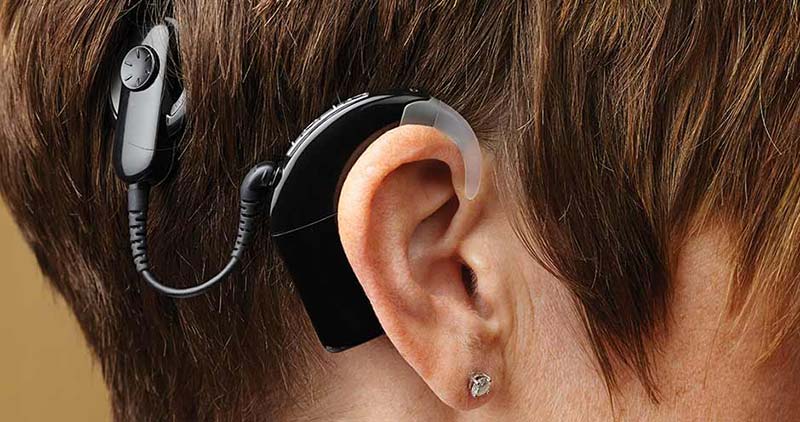
The National Institute for Health and Care Excellence (NICE) is a non-departmental public body in England, that provides national guidance and advice to improve health and social care.
On 7th March 2019, NICE released an update for the 2009 cochlear implantation guidelines in children and adults with hearing loss.
Cochlear implants are electronic prosthetic devices used in adults and children with sensory neural hearing loss, who are not benefited by the use of conventional hearing aids. Unlike hearing aids, which make sounds louder, cochlear implants work by turning sound into electrical signals and then directly stimulate the hearing nerves.
In the current update, the threshold for cochlear implant eligibility has been reduced to equal or greater than 80 decibels hearing loss (dB HL) at two or more frequencies without the use of hearing aids, down from 90 dB HL for children and adults with severe to profound hearing loss.
Burden of hearing loss
According to the statistics, approximately 370 children in England are born with permanent severe to profound deafness every year. About 1 in every 1,000 children is severely or profoundly deaf at 3 years old. This rises to 2 in every 1,000 children aged 9 to 16 years.
There are approximately 6,13,000 people older than 16 years with severe to profound deafness in England and Wales.
In the UK around 3% of people older than 50 and 8% of those older than 70 years have severe to profound hearing loss.
40% of children who are deaf and 45% of people younger than 60 years who are deaf have additional difficulties, such as other physical disabilities.
Currently around 1,260 people in England receive cochlear implants each year. With the updated guidelines for Cochlear implantation, NICE said that this number could increase by 70% to 2,150 by 2025. That means 890 more children and adults will be eligible for cochlear implants on the NHS each year.
The new eligibility criteria for cochlear implants will ensure that they continue to be available on the NHS to those individuals who will benefit from them the most. – Meindert Boysen, director of the Centre for Technology Evaluation.
Updated NICE Guidelines for cochlear implantation.
Following are the recommendations put forward by the committee:
- Unilateral cochlear implantation is recommended as an option for people with severe to profound deafness who do not receive adequate benefit from acoustic hearing aids, as defined in 5.If different cochlear implant systems are considered to be equally appropriate, the least costly should be used. Assessment of cost should take into account acquisition costs, long-term reliability and the support package offered. [2009]
- Simultaneous bilateral cochlear implantation is recommended as an option for the following groups of people with severe to profound deafness who do not receive adequate benefit from acoustic hearing aids, as defined in 5:
- children
- adults who are blind or who have other disabilities that increase their reliance on auditory stimuli as a primary sensory mechanism for spatial awareness.
Acquisition of cochlear implant systems for bilateral implantation should be at the lowest cost and include currently available discounts on list prices equivalent to 40% or more for the second implant. [2009]
- Sequential bilateral cochlear implantation is not recommended as an option for people with severe to profound deafness. [2009]
- People who had a unilateral implant before publication of this guidance, and who fall into one of the categories described in 2, should have the option of an additional contralateral implant only if this is considered to provide sufficient benefit by the responsible clinician after an informed discussion with the individual person and their carers. [2009]
- For the purposes of this guidance, severe to profound deafness is defined as hearing only sounds that are louder than 80 dB HL (pure-tone audiometric threshold equal to or greater than 80 dB HL) at 2 or more frequencies (500 Hz, 1,000 Hz, 2,000 Hz, 3,000 Hz and 4,000 Hz) bilaterally without acoustic hearing aids. Adequate benefit from acoustic hearing aids is defined for this guidance as:
- for adults, a phoneme score of 50% or greater on the Arthur Boothroyd word test presented at 70 dBA
- for children, speech, language and listening skills appropriate to age, developmental stage and cognitive ability. [2009, amended 2018]
- Cochlear implantation should be considered for children and adults only after an assessment by a multidisciplinary team. As part of the assessment children and adults should also have had a valid trial of an acoustic hearing aid for at least 3 months (unless contraindicated or inappropriate). [2009]
- When considering the assessment of adequacy of acoustic hearing aids, the multidisciplinary team should be mindful of the need to ensure equality of access. Tests should take into account a person’s disabilities (such as physical and cognitive impairments), or linguistic or other communication difficulties, and may need to be adapted. If it is not possible to administer tests in a language in which a person is sufficiently fluent for the tests to be appropriate, other methods of assessment should be considered. [2009]
Recommendations for further research
The committee also put forward following recommendations for further research.
- The committee recommended that a randomized controlled trial should be carried out to examine the benefit of bilateral cochlear implantation compared with unilateral cochlear implantation in adults with severe to profound deafness. [2009]
- The committee recommended that data on the health-related quality of life of children with bilateral cochlear implants should be collected and measured in accordance with NICE’s guide to the methods of technology appraisal. [2009]